Dhanurasana: Health Benefits,variations and How to do ?
What is Dhanurasana (Bow Pose)?
Dhanurasana (Bow Pose) yoga is one of the 12 common hatha yoga poses. Also known as Urdva Chakrasana, this asana features an archer’s bow. In Sanskrit, ‘Dhanu’ represents bow and ‘Asana’ defines posture. This yoga posture is one of the three key back stretching exercises and motivates a powerful stretch along the anterior part of the body and a deep opening at the heart center, helping you develop an attitude of fearlessness and grace.
Dhanurasana has been named after the form the body takes while doing it – that of a bow. Just as a well-strung bow is a virtue to a warrior, a well-stretched body aids keep you flexible with a good posture.
Dhanurasana pose is a great yoga pose that stretches and activates almost all main types of body muscles like arms, biceps, triceps, shoulders, chest, back, core (abs), hamstrings muscles, hips, knees and the neck.
The bow and Indian mythology
The bow has frequently been recommended in Indian mythology. In the Ramayana, Lord Rama broke Lord Shiva’s bow at princess Sita’s swayamvara and got the victory by marrying her, a feat that no other prince could perform, suggesting his divinity. In the Mahabharata, some of the greatest duels included the bow and arrow. Both prince Arjuna and his arch-enemy Karna were experts at using the bow and arrow. However, Arjuna exceeded all others in archery with his determination and sustained practice. It is through this determination and consistency that you will inspect within yourself, as you smoothly transfer into Dhanurasana.
What are the Preconditions for Dhanurasana?
Some conditions you need to follow to do Dhanurasana :
- When we perform this pose at a specific time in an ideal physical state, it yields maximum advantages.
- Make sure you do this asana 4-5 hours after having your prime meal.
- It is best to perform this pose in the morning. However, if for some reason, you are unable to perform it then, involve it in your evening practice.
- Ensure that you are appropriately warmed up with the preparatory poses before you perform Dhanurasana.
What are the Preparatory poses for Dhanurasana?
These are the key preparatory poses that must be practised before Dhanurasana.
- Shalabhasana (Locust Posture)
- Bhujangasana (Cobra Stretch)
- Setu Bandhasana
- Urdhva Mukha Svanasana
- Virasana
- Supta Virasana
- Sarvangasana
How to perform Dhanurasana (Bow Pose)?
You can do Bow Pose on a yoga mat or carpeted floor. No equipment is needed, but a yoga towel is optional.
Lie in a prone position. place your chin on the mat and your hands on either side. Your palms facing the floor.
Exhale while you flex your knees. Draw your heels as close as you can to your buttocks. Your knees are around the hip- width apart.
Raise your hands and take a grab of your ankles. Be sure to grasp the ankle and not the upper part of the feet. Your fingers should clasp around the ankles, but your thumb does not. your toes are pointed.
Inhale and raise the heels away from the buttocks, keeping a grasp of your ankles.
Simultaneously, raise your head, chest, and thighs away from the mat. As you raise, rotate your shoulders safely and comfortably.
At this point, only your core should touch the mat, while the rest of your body is raised towards the roof.
Move your tailbone into the mat to deepen the stretch. You should feel the stretch in the back as the weight and balance transfers to your core. Your chest and shoulders should feel open.
Look straight ahead and pause the pose for about 15 seconds while you focus on stretching, balancing, and breathing.
exhale and release the position. Lower your head, chest, thighs, and feet and return to the mat. release of your ankles and back your hands to your side.
Relax for a few seconds and repeat the pose as required or continue to your next pose.
How to do Dhanurasana by watching a video?
What are Follow up poses for Dhanurasa?
Practice these follow up poses after doing Dhanurasana:
- Urdhva Dhanurasana
- Urdhva Mukha Svanasana
- Ustrasana
- Matsyasana
- Setu Bandha Sarvangasana
What are the Benefits of Dhanurasana (Bow Pose)?
From mental health to physical fitness, Dhanurasana yoga’s advantages are countless. Practicing Dhanurasana pose daily yields a lot of good results in the body.
- This position stretches the abdomen and the abdominal organs, and thus activates the reproductive organs.
- It strengthens the ankles, thighs, groins, backbone, chest, shoulders, neck, and abdominal muscles and makes them flexible.
- Practicing Dhanurasana aids you to shed calories and burn body fat, especially in the belly. It also aids in toning the arm and legs muscles.
- It is extremely helpful for decreasing fatigue and lethargy. This asana activates the nerves in the navel region, which offers the best efficiency and increases the kidney and liver functions, digestive system, and reproductive system
- It increases digestion and appetite as well.
- Dhanurasana assists in better blood circulation to the whole body and all organs.
- It also aids people with renal (kidney) disorders like Kidney stones, Glomerulonephritis, Urinary tract infections (UTIs), Polycystic kidney, etc.
- Dhanurasana is an excellent asana to cure backache as it gives a good stretch to the muscles, nerves, and ligaments in the back.
- This yoga posture massages the liver and assures the best functioning of all the adjacent organs.
- Dhanurasana pose aids in curing asthma.
- It is also a great aid for menstrual discomfort and constipation.
- It cures dyspepsia (obesity), and gastrointestinal and rheumatism problems.
- It also increases the function of the pancreas and is advantageous in diabetes.
Dhanurasana Benefits for Females:
- Dhanurasana is best for the management of menstrual disorders.
- It is suggested for PCOS.
- It helps decrease PMS symptoms
What are the Types of Dhanurasana?
The Dhanurasana is a fairly modern pose by itself. In addition to the common version of the bow pose, there are also several variations of the Dhanurasana that you can practice as you get more comfortable with the common version of the pose. Here are some of the most common types of the Dhanurasana.
- Purna Dhanurasan
- Parsva Dhanurasana
- Urdhva Dhanurasana
- Dvpada dhanurasana or bridge bow pose
- Padagusta dhanurasana or big toe bow pose
- Dandayama dhanurasana or standing bow pose
- Eka pada urdhva dhanurasa or one legged wheel pose
- Akarna Dhanurasana (Archer’s Yoga Pose)
Purna Dhanurasana
In Purna Dhanurasana or the full bow pose, the body is flexed fully so that the feet are brought in contact with the head. In this asana, the entire body seems to be in a shape like a completely stretched bow, a deep back-bend pose that opens your heart.
Parsva Dhanurasana
What is Parsva Dhanurasana ?
In Sanskrit, ‘Parsva’ refers to side or flank, ‘dhanu’ represents ‘bow, and ‘asana’ means ‘pose.’ It is named so as while doing the asana the body resembles the form of a bow; a bow placed on the floor. Parsva dhanurasana is also famous by its English name, side bow pose, or flank bow pose.
Parsva dhanurasana is a back-bending stretching position. It is done in a prone position. Basically, it’s a variant of a bow pose in which the body is rolled to side wards to improve the spread of the stretching effect. The challenges included in the asana makes it an intermediate level pose.
Both the feet are grabbed by the hands generating two complementary motions in the body. It involves the forward motion in the shoulder and reverse push in the legs. These two opposite forces generate space within the lumbar part of the back.
It is a variant of dhanurasana with a slight difference in flexing the body over to the side. It is done side-wise, therefore it deeply stretches each side individually.
Parsva Dhanurasana Benefits:
- Stretches and strengthens muscles – Parsva dhanurasana gives an extra stretch to the spine, neck, chest, shoulders, and abdomen. It also stretches the legs, and arms, and opens up the hips. It increases the body’s flexibility. Along with stretching, it makes all the included muscles stronger.
- Tones the body – The arm and leg muscles are engaged in the position while keeping the pose. It contracts the muscles and leaves them well toned.
- Improves respiratory system – The side bow pose includes the expansion of the chest. It boosts the breathing capacity by expanding the lungs. It also cures any respiratory disorders like asthma. It also improves pulmonary functions.
- Cures digestive disorders – Parsva dhanurasana includes back-bending which stretches the abdominal cavity. Besides this, the rolling included in the asana massages and activates the abdominal organs. It increases digestion. It can help in the shed of constipation, other gastrointestinal or digestive disorders.
- Stimulates reproductive system – The stretch included also stimulates the reproductive organs. This stretches the muscles of the inner thighs and groin. It increases the blood circulation in these regions and activates the sex organs 2.
- Decreases stress – Parsva dhanurasana gives a soothing effect on the nervous system. It aids in reducing fatigue and tension. Plus, the head is involved in the inversion that passes blood flow to the brain. Thus it decreases stress and anxiety.
- Improves posture – The asana is best to make the spine flexible. It aids in getting rid of any hunching or slouching of the back. This finally corrects the posture.
- Stimulates the Manipura chakra – Side bow pose includes stretching of the abdominal cavity. This activates the solar plexus (Manipura chakra), which in turn enhances energy, self-esteem, and confidence.
- Tones the glands – The side bow poses massages and soothes the pancreas, liver, and adrenal glands. This increases their functioning and stimulates their secretion. It assists in the detoxification of the body.
- Weight loss – It is one of the major advantages of Parsva dhanurasna. By stretching the abdominal region it assists in getting rid of extra body fat and providing a toned body.
What are Preparatory poses for Parsva Dhanurasna?
- Cobra pose (Bhujangasana)
- Reclining Hero Pose (Supta Virasana)
- Bridge pose (Setu Bandha Sarvangasana)
How to perform Parsva Dhanurasana ?
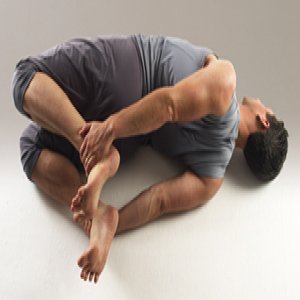
Lie on your stomach on the mat.
Draw your head up and flex your knees projecting the toes towards your head.
Inhale and grab your ankles with your hands.
Raise the thighs off the ground and try to pull your arms and raise the legs as much as possible.
Breathe in and roll your shoulders forward.
Exhale and draw your right shoulder towards the ground.
Squeeze the knee together and keep the neck in a line with the spine.
Keep your look towards your nose and be in a bow pose on the sides.
Pause in the pose for 5 breaths.
Breathe out and roll onto your stomach and jump into the left side.
Do the same steps on the left and take 5 breaths.
Finally, back to the center rolling onto your stomach.
Let go and straighten the legs and relax into the prone position.
What are Precautions and contraindications to take care of during Parsva Dhanurasana?
- Avoid doing parsva dhanurasana after having a meal. There should be a three hours longs pause between the meal and the practice.
- Avoid doing it at night, especially before sleeping hours.
- While pulling the thighs and chest do not flex the elbows. Keep the pulling force equally on the upper and lower body.
- Do not allow the knees to go past the shoulders. maintain them aligned.
- Don’t perform parsva dhanurasana in case of pregnancy, heart diseases, neck, or lower back injury.
- If you have a migraine then skip doing this asana.
- Never do it if you are suffering from a hernia.
What are the Props and Modifications of Parsva Dhanurasana?
Use the following props to modify the side bow :
- Yoga strap – If it is challenging for you to grab the ankles by the hands using a yoga strap will do. Wrap it around both the feet and use the ends to hold to keep the shape of the bow.
- Bolster or blanket – Place a bolster or blanket under the pelvis and then go for reaching your ankles, this will help in raising the chest. It will make the back bend deeper and helps the upper body as well.
Urdhva Dhanurasana or upward-facing bow
What is Urdhva Dhanurasana?
Wheel Pose — Chakrasana or Urdhva Dhanurasana — also called as Full-Wheel Pose and Upward Bow Pose, is a back bending posture that opens up the chest, tones the thighs, arm and abdomen, and engages the entire body. As a heart-opening stretch, this pose assists release sadness and depression. Here, you start in a standing position and bend backwards till your palms touch the floor. After doing Wheel Pose, it is common to perform a mild twist or forward bend.
Benefits of Urdhva Dhanurasana:
- Improves energy and heat
- Strengthens the spine, arms, legs, and abdomen.
- Opens the chest.
- Stretches the shoulders.
- Stretches the core and hip flexors.
- Strengthens the thighs and glutes.
- Improves flexibility in the spine.
How to do Urdhva Dhanurasana?
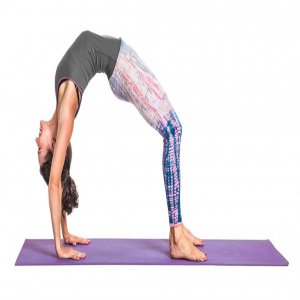
Start on your back with your knees bent and your feet placed hip-distance apart and parallel, directly below your knees, which should also be hip-distance apart.
Place your hands alongside your ears with your palms downwards and your fingers facing toward your shoulders.
Without letting your feet or your knees spread apart, take a breathe in, then use an exhalation to raise yourself partway and put the crown of your head on the mat. Do not put any of your weight on your head.
Fix your elbows into your midline, move your elbows toward one another, pull your upper arms into their sockets, and initiate to arch your middle and upper back.
Keeping all these actions, with the next breathe in, press down with your hands and feet, and raise into the pose.
Extend your arms as much as possible but keep at least a slight flex in your knees.
Ensure your feet have not turned out, and root down with your big toe piles.
Rotate your inner thighs to the ground, and move your tailbone toward your feet toward the backs of your knees. Allow your head hangs freely, and raise your sternum in the direction you are facing while directing your tailbone toward your feet.
To feel a deepened stretch, walk your feet closer to your hands, maintaining your forearms and shins perpendicular to the ground and parallel to each other.
Pause for 5–10 breaths, then lower directly to the ground.
What are the Safety and Precautions to take during Urdhva Dhanurasana?
- You should not perform Wheel Pose if you have had an injury or chronic issue with your neck, knees, wrists, shoulders, or back.
- Don’t force your body into the position before it is flexible enough to do so without straining.
- Flex back only as far as you can naturally.
- With continued doing, you will gradually build your flexibility to achieve the pose.
- Pregnancy.
- Back problems (especially lower).
- Shoulder injury.
- High or low blood pressure.
Dvpada dhanurasana or bridge bow pose
What is Dvapada Dhanurasana ?
Dvapada Dhanurasana is an Intermediate Level Yoga position. We recognize this in English as Bridge Pose on Elbow. In this pose, the spine remains twisted like a bow. The whole weight of our body is balanced on the elbow and foot.This asana is made up of a mixture of 2 words.
Dvapada – bridge
Dhanurasana – Elbow pose
When we combine these words, Bridge Pose on Elbow is formed.
Meaning –
Hindi Means – Dwapada Dhanurasan
Sanskrit means – dvapada dhanurasana
English Means – Bridge Pose on Elbow
Preparatory Pose
- Savasana
- Dhanurasana
- Chakrasana
Bridge pose on Elbow Benefits :
- This asana makes your spine strong and flexible.
- This posture improves the strength of your neck and shoulder.
- This asana also aids to correct the posture of your body.
- It also heals stomach problems like gas and indigestion.
- Improves digestion power and improves blood circulation.
- This posture decreases stains and spots on your face and improves Glow.
- This pose makes the joints strong and improves their strength.
- This asana improves mental strength.
- It also aids in decreasing stress and anxiety.
- Aids in eliminating depression too.
How to do?
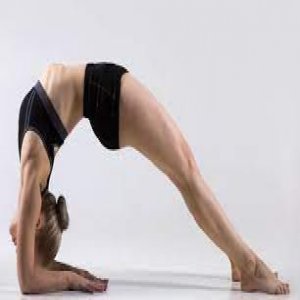
First of all, you have to lie supine on top of the mat.
Now you have to bend your leg with your knee. Your heels should be close to the hips.
The position of the body should be at an angle of 90 degrees.
Now you have to inhale and lift your lower back up.
Your head and shoulder should be touching the mat.
You have to carry the lower back from your palms.
Your hands should be touched the mat from shoulder to elbow.
Now you have to take hold of this position.
During this, you have to breathe continuously and slowly.
Finally, you have to release this posture.
The beginner must hold at least 20 to 30 seconds.
Intermediate should hold more than 30 seconds but less than 60 seconds
The expert will hold for 120 seconds
Follow up Pose
- Bitilasana
- Viparita karani
- Parighasana
Variations
- Bridge pose on forearms
- Bridge pose using Chair
- Bridge pose using wall
Dvapada Dhanurasana Precautions :
- This asana should not be done when there is spine, neck, and shoulder pain.
- Beginners should perform this asana carefully.
- Pregnant women should not perform this asana.
- It should not be performed in case of Hip Pain or injury.
- Even if there is an issue of high blood pressure and heart, This asana should not be performed.
Padagusta Dhanurasana or big toe bow pose
What is Padagusta dhanurasana?
Big Toe Bow is also known as Padangusthasana and Dhanurasana. This is literally challenging posture and if you wanna practice it then you need a solid handstand, so if you are unknown with handstands be sure to work on that and get stable and nice in your handstand. The second thing you need is a very good back bend so if you don’t have a nice back bend then practice with the tools and postures like Urdhva Dhanurasana (Upward Bow Pose) and get that strength and stability in your spine before you begin to try. The third thing you need is a relieved attitude because if you press too hard or tense too hard in this pose then your body just won’t open so if you have these three tools and then you’re ready to begin.
Benefits of Padagusta dhanurasana:
- This variation of the Big Toe Bow pose unites the core-strengthening advantages of the Table pose while also offering a stretch through the spine, chest, shoulders, hip flexors, and quadriceps.
- As a back bend, the posture is energizing and uplifting and can help with fatigue and anxiety and mild depression.
How to perform Big Toe Bow?
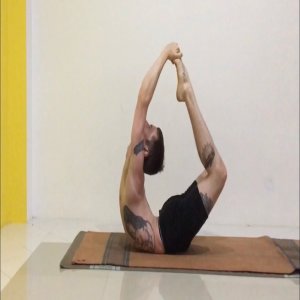
Lie down and take your hands downwards to the mat, maintaining your shoulders forward.
Breathe in and then easily jump and gently firm the pelvic floor to find your balance.
Go all the way up in the handstand and pause it for a few breaths.
Get stable and push up from the shoulders and exhale as you begin to hollow your back.
Draw forward with the legs and press through the shoulders, keep the legs extended and then once you reach your maximum gently flex your knee
Pause in this position for a few breaths.
Dandayama dhanurasana or standing bow pose
What is Dandayama dhanurasana?
Dandayamana dhanurasana is a modern variation of standing balance that embraces a backbend. The name is derived from the Sanskrit danda, which represents “stick” or “staff,” Chandra, defines “bow” and asana means “pose.”
The standing bow pulling pose or dandayamana dhanurasana is beneficial for beginners. It increases your balance and core strength. Standing Bow Pose, also known as The Lord of the Dance Pose, is beautiful and empowering pose.
Benefits of Standing Bow Pulling Pose :
- Activates the cardiovascular system.
- Improves circulation to the heart and lungs.
- Opens diaphragm.
- Opens the shoulder joints.
- Aids with frozen shoulder conditions.
- Increases the elasticity of the spine.
- Increases strength and balance firming the abdominal wall and upper thighs while also tightening the upper arms, hips and buttocks.
- Improves the size and elasticity of the rib cage and lungs and increases the flexibility and strength of the lower spine.
- Aids to reducing abdominal fat.
How to Do Standing Bow Pose?
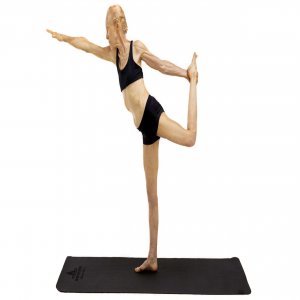
Begin by standing with your feet together in Mountain Pose.
Flex one leg, keeping your knees together, drawing your foot behind you.
Flex the same arm, with your elbow in tight to your side and hand straight out to the side of you.
Reach back and grasp hold of the inner side of your foot with your fingers touching the top of your foot and your thumb touching the sole of your foot.
Straighten your foot up and back with your free hand reaching forward, parallel to the floor.
Hold in the pose for a few breaths and then release your foot and back to standing. Try to let go in a controlled manner, not just letting yourself fall out of the pose.
Repeat on the opposite side.
What are the Modifications of Standing Bow Pose?
If you are struggling with your balance in this pose, try standing near the wall and using your hand against the wall for balance. You need a friend or partner to brace your hips for support.
To perform the full version of this pose, you need to flip your grasp of both arms. Fix in mind this is a very modern pose and should only be done if you have a very advanced yoga practice.
Standing Bow Pose Contraindications :
- You should always consult your doctor before doing yoga.
- You need to avoid this pose if you have an injury to the ankle, arm, knee, or back.
Eka pada Urdhva Dhanurasa or One-Legged Wheel Pose
What is Eka pada Urdhva Dhanurasa ?
The one-legged wheel pose may also be known as Eka pada urdhva dhanurasana in Sanskrit. A modern version of the urdhva dhanurasana, the modern bridge pose with one leg up increases the flexibility of your spine. It decreases the fat builds up from your oblique areas and boosts your respiratory system too. This asana can prevent osteoporosis too.
Benefits of One-Legged Wheel Pose :
- Stretches the whole body.
- Tones the spine and improves spinal flexibility
- Opens the chest.
- Strengthens the arms, back and hips.
- Activates the thyroid and pituitary glands.
- Energizes the entire body.
- Calms the mind.
How to do Eka pada Urdhva Dhanurasa?
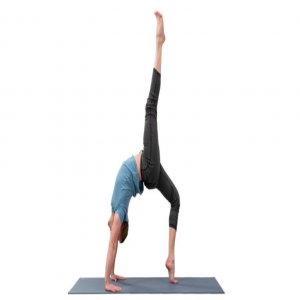
Begin on your back with your knees flexed, shins straight, and your feet about hip-distance apart with your toes pointing forward.
Raise your hips upward, firm your inner thighs, and pull your heels near to your glutes to engage your hamstrings.
Draw your arms up with your palms facing upward and flex at the elbow to bring your palms down near your ears, with your fingers facing either the shoulders or slightly outward.
Push down through your hands and feet and up onto the crown of your head.
From here, push down again to raise your head off the floor and straighten your arms.
Shorten the posture by walking your feet in and squeezing your chest through the gateway of your shoulders.
Draw one foot a little near to the centre and balance on that foot while pulling your other leg into your chest with your toes pointed, then extend your leg straight upward.
Contraindication of Eka pada Urdhva Dhanurasa:
- Consult your doctor first or avoid this position altogether if you have injuries to your shoulders, wrists, hips, or spine.
- Avoid high or low blood pressure and headache like problems.
Akarna Dhanurasana (Archer’s Yoga Pose)/The Shooting Bow Pose/Bow to ear Pose
What is Akarna Dhanurasana ?
Here is an incredible Asana called Akarna Dhanurasana, it comes under the intermediate level and needs more strength of the back. This Pose is totally different from the traditional Dhanurasana. The word Akarna is a Sanskrit word; in which Karna refers to earring, ear relating to the ear, Dhanu defines for bow and the Asana means to seat, posture or pose.
In Dhanurasana, the body forms the shape of Bow but in The Akarna Dhanurasana, your body imitates stretching the strings of a bow and aiming the bow. So Akarna Dhanurasana is a compound pose in comparison to Dhanurasana. In this Pose your body takes the form which is the same as a bow and arrow so this Asana is named so.
Preparatory Yoga Poses:
- Upward facing dog
- Setu Bandha Sarvangasana
- Cobra Pose
Akarna Dhanurasana Benefits :
Strengthens the legs and arms
Akarna dhanurasana stretches the leg muscles fiercely. Along with legs, the joints of arms involving shoulders and elbows are also exercised while doing the pose. It increases the blood flow to these muscles, hence making them stronger.
Tones the abdomen
The core muscles are also stretched while staying in the archer’s pose. It activates the abdominal organs. It burns the fat surrounding the abdomen and tones the abdominal muscles. The activation of the internal organs also improves digestion.
Increases hips and spine flexibility
Akarna dhanurasana is done sitting on the floor raising the leg against gravity. It unlocks the hips by stretching the hip flexors. The spine is kept straight and activated from the lower back to the crown of the head. Expanding the spinal muscles and opening the hips increases flexibility.
Increases blood circulation
This asana also opens the chest and boosts heart efficiency. It improves the blood flow in the hips, knees, and abdominal region. The opening of the heart includes the overall functioning of the circulatory system.
Enhances the efficiency of kidney and liver
The posture applies pressure on the internal organs like the kidney, and liver. It massages these organs. Besides these, the function of the spleen is also activated. It boosts the immune system. Improved functioning of the liver and kidney filters the blood and eliminates toxins from the body.
Enhances concentration
Akarna dhanurasana is a challenging posture that needs mindfulness to balance the body. While holding the posture the brain is kept still and balanced. It increases the focus and concentration power of the practitioner.
Activates sacral chakra
Holding this pose applies pressure on the lower abdomen. It stimulates the Svadhisthana (sacral) chakra. This increases the creativity, emotional well being, and sensuality of the yogi.
How to do Akarna Dhanurasana (Archer’s Yoga Pose):
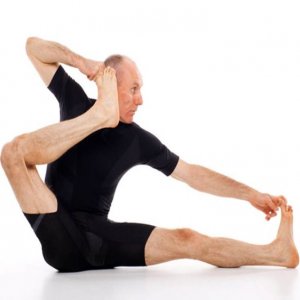
First, sit comfortably on the ground with straight legs in front of you. During this maintain your head, back and shoulders are straight.
Breathe deeply and place your palms on your thighs.
Now, breathe out along with slowly slide your left hand towards your left foot. With your left hand grab the big toe of your left foot and pull it towards your face. During this, with your right hand try to reach the big toe of your right foot and grab it and hold it there.
Breathe in deeply and pull back your left foot from your face to the left ear.
Hold in this Pose for about 30 to 60 seconds.
After that, breathe out and slowly down your left leg and release your hands from the foot and get back to starting position.
Repeat the same sequences with your opposite leg.
(For maximum benefit, the pose should be done at least twice with your both legs).
Follow Up Yoga Poses :
- Ardha Matseyendrasana
- Supta Padangusthasana
Props and Modifications for Akarna Dhanurasana:
Chair – After sitting in dandasana put a chair beside you near your shoulder. Raise the leg holding the big toe and as it reaches near the ear, place the foot on the chair.
Yoga strap – Sit near a wall and tie a yoga strap creating a loop overhead. Do the asana and rest the arch of the raised foot within the loop as you straight the leg vertically.
Alternatively, a yoga strap can be used to grasp the lower foot. Bind the strap around the foot of the rested leg. Hold the strap to keep grasping the foot and raise and extend the other leg up.
Against a pillar – Sit next to a pillar in dandasana. grab your next to the pillar leg to extend upward. As you straighten it upwards, rest its heel on the pillar. This keeps the pose more steadily.
Variations for Akarna Dhanurasana:
- Akarna Dhanurasana Standing – This variation is done in kundalini yoga as a kriya. To do this, legs are bough into the warrior pose like position. Then the left hand is extended forward (parallel to the left knee) and the right arm is pulled back at the right shoulder; making an archer’s pose.
- Baddha Akarna Dhanurasana – Baddha means bound. In this variation, after doing the archer’s pose, both hands are folded around the back extended leg so that it can be stretched upward with hands support.
- Akarna dhanurasana II – Sit in dandasana. Bend the right knee and place the right foot on the left thigh. Hold the right big toe with the left hand wrapping the thumb, index, and middle finger. Hold the left big toe with the right hand. Lift the right foot with the left hand to draw it closer to the left ear. Then, repeat it switching the hands and legs.
- Akarna dhanurasana advanced variation – Sit in dandasana and lift the right leg placing it behind the neck. Hold the leg with the right hand with the thumb near the ankle. Switch the hands to hold the right foot with the left hand. Turn towards the left and stretching the right arm to hold the left toes. Simultaneously lift the right arm to hold the right toes. Then, release and repeat switching the legs.
Precautions of Akarna dhanurasana:
- While holding the pose does not flex the knees.
- The lower leg must be kept extended and firm on the ground.
- Do not lose the grasp on the big toes throughout the pose.
Contraindications of Akarna dhanurasana:
- Women during pregnancy and menstruation don’t perform this pose.
- It should not be done with an injury in the shoulders and hamstrings.
- People with a herniated disk or lower back issues don’t perform this asana.
- Prevent it while recovering from a recent surgery around the shoulders, spine, arms, or hips.
What does Dhanurasana (Bow Pose) Breathing mean?
Breathing is considered the most useful tool for any yoga asana. Body flexibility can only be gained by constant the practice of yoga with proper breathing. Here are the most essential breathing techniques to master Dhanurasana.
Before starting to bow pose, when you are performing Makarasana (Crocodile Pose), breathe a few times to aid your spine.
While taking a breath in, stretch the arms behind you, hold the flex legs at the ankles and then exhale. Practice breathing normally with your forehead on the ground. Ensure the body is erect with proper alignment to the mat.
While lifting the forehead off the floor, take a deep breath, stretch out the upper body, shoulders, chest upwards and backwards and grip on to the ankles tight. Again, remember the mul-mantra of breathing. At any step, remember to breathe.
Once you’re comfortable in the pose, begin slow breathing and with every inhalation try to lift the thighs higher with chest and shoulders moving backwards.
The more you perform slow & steady breathing, the more your body will balance. Along with breathing deeply, try and stay in this pose with your eyes closed.
Now while lowering both knees, shoulders and chin, slowly breathing out. Then let go of the ankles and stretch the legs on the ground and relax.
Lastly, perform the Makarasana pose and begin to stretch the whole body back to the floor and relax.
What are the Common Errors To Avoid during Bow pose?
It is critical to avoid these mistakes in order to prevent injury and preserve appropriate techniques.
Avoid Grabbing the Tops of Your Feet
When reaching back with your hands, grasp your ankles alone, not the entire foot. While the ankle is the most
sturdy area of the foot, grasping the top of the feet might result in slippage. If your hands slide, you risk losing your equilibrium and colliding with the ground with your chin or chest.
Maintain Hip-width Knees
The breadth of your knees is critical for proper Bow Pose form. When the knees are too close together, you may have a backache. Additionally, it might stretch the hips inappropriately, resulting in straining. keeping a hip-width gap between your knees helps the body in aligning properly and pleasantly.
Rotate the Shoulder Socket With Extreme Caution
Bow Pose asks you to reach back and then lift your arm. During the exercise, assure that you rotate your shoulder slowly and cautiously. Scurrying via the reaching and lifting of your arms might damage or irritate your shoulder.
Safely Exit the Pose
Bow starting and end For novices and those with limited flexibility, posing may be challenging. It is critical to carefully release the position to prevent damage and strain. Let go of the stance after your head, chest, thighs, and feet have been lowered. When certain body parts are lifted, releasing the position might result in a painful collision with the ground. Slowly lower yourself and then let go of your ankles when it is safe to do so.
Avoid Holding Your Breath
Holding your breath is a required component of several yoga positions and may be helpful. Avoid holding your breath in Bow Pose. To get the advantages of this stance, use the proper breathing rhythm. As you flex into and out of the position, exhale. When you lift, inhale. Holding your breath may cause the chest to close up.
Who Should Not Perform The Bow Pose?
Due to the pose’s dynamic effect on the abdomen region, there are several restrictions on who can and can not practice it. Don’t perform Dhanurasana (Bow Pose) if you have any of the following:
- As this stance makes breathing a bit more difficult, it may decrease the blood supply to the brain.
- Injury to the neck
- High or low blood pressure
- Hernia
- Insomnia
- Migraine headache
- Spondylitis
- Lower back pain or a back injury
- Abdominal surgery performed recently
- Ulcer in the stomach
- Abdominal surgery performed recently
- Pregnant women should abstain from performing this Dhanurasana stance. It is crucial to understand the architecture of the body and the effects of different yoga poses. If you are a total newbie in yoga, refrain from performing dhanurasana steps home.
What are the Precautions to take to do Dhanurasana?
- Whether you are a beginner or a seasoned yoga practitioner, it is essential to take certain precautions when you are getting into this asana. Here are some things you should take care of when doing the Dhanurasana.
- Do not stretch your upper or lower body further to the point of comfort. If you notice yourself straining to reach your ankles, take it slowly and make use of pillows or padded blocks for support.
- In case you suffer from neck injuries or have lower back injuries, this may not be a good asana for you, since it could aggravate those issues.
- Hold your ankles carefully. Do not press too hard, since that could restrict circulation.
Conclusion
The bow pose has many advantages for yoga practitioners. If you are just getting initiated with your yoga practice, you can slowly merge the Dhanurasana and its many variations in your daily routine.

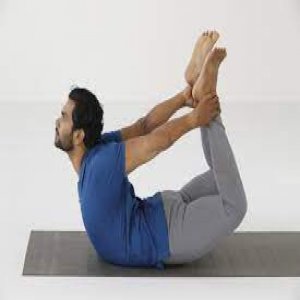
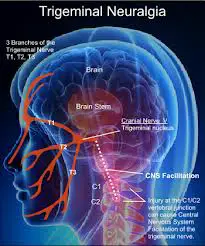
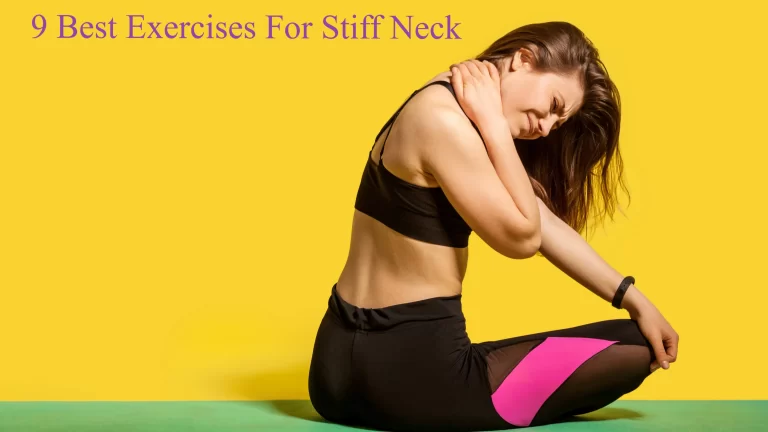
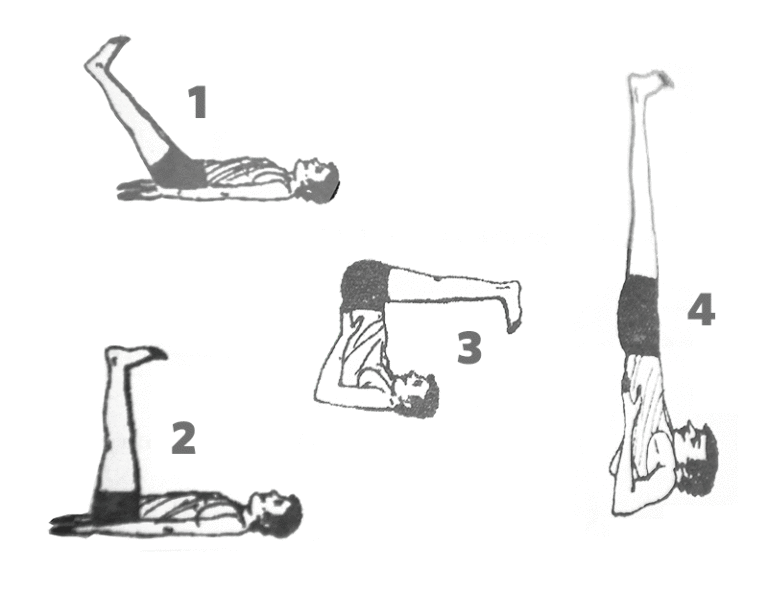
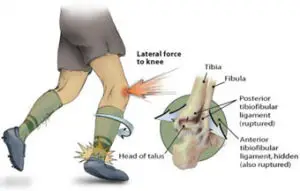
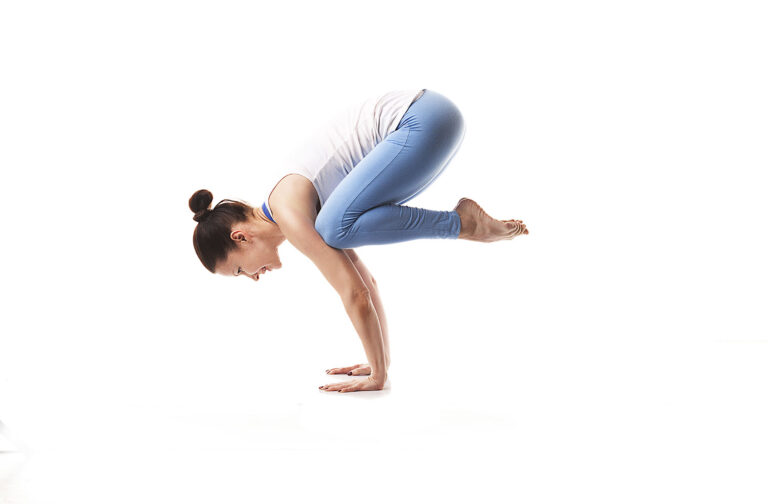
4 Comments